|
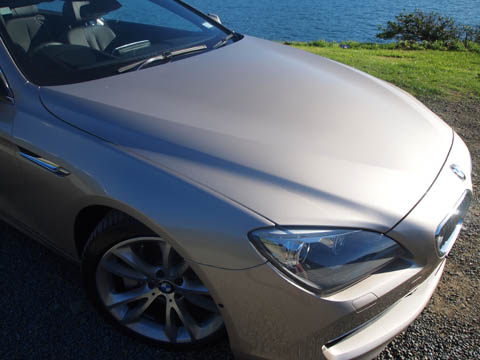
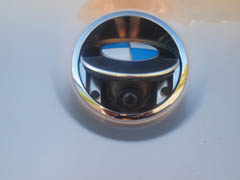 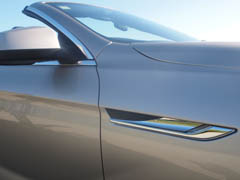
WITH SUMMER APPROACHING, it’s convertible
season, and there doesn’t seem to be a more glamorous solution than
the BMW 650i Cabriolet.
Lucire
had actually attended the launch of the car earlier in the year,
and given how taken we were with the 5-series—the
best saloon in its class in the world—we expected great things from
a cabriolet based on it.
First appearances are extremely positive. The cabin
is unique to the Sechser, with a more wraparound style. You
sit lower than you do in the Fünfer, and even with the
top up, the impression you get while sitting in the driver’s seat
is that this is a car that begs to be driven.
Turning on the ignition, the hum of the V8 is one of
the most enticing sounds. Maybe it’s our imagination, or maybe it’s
the heavier right foot with which we first experienced the 650i
around the rural areas south of Auckland, but it burbles with a
more satisfying, throaty noise than the
550i we tested last year. The engine note begs you to drive
it more—and we complied.
BMW New Zealand has opted
to bring in the 4·4-litre twin-turbo V8 model first, even though the carbon
dioxide emissions are up at the 249 g/km level, and on our test,
we managed 17·1 mpg (16·5 l/100 km).
There is no stop–start for the V8. It is an out-and-out
sports car, in the traditional mould—but with the luxury appointments
one expects in this market.
However, as it is quick to point out, the BMW
fleet is down at the 184·5 g/km mark, with a plan to get it below
the 170 g/km threshold as originally planned by the former Labour
government. Mini, meanwhile, is at 147 g/km. BMW’s
figures are considerably lower than even Toyota’s, and slightly
lower than Audi’s.
And it’s not as though the 650i is an environmentally
unfriendly V8. For both the planet and for lightness, the front
guards are made from recyclable plastic, while the bootlid, made
from SMC, won’t interfere with radio
signals, so the aerial is hidden underneath.
The cleverness doesn’t stop there: the BMW
badge on the boot tilts to reveal the rear-view camera, while ultrasonic
sensors are hidden in the fins with the indicators. The 650i can
hook up to the internet via Bluetooth and can even stream radio
if need be—if you can afford the data charges commonly found in
New Zealand. An app will even continue the car’s sat-nav to your
final destination if you have parked far away. Unlike lesser models,
it will allow two cellphone pairings.
All this is well and good, especially for the list price
of NZ$248,500, but convertibles are
about style.
Good manners prevent us from saying what speed we took
the 650i to, but the chassis is tricky at the top limit best found
on a private road, though most drivers will prefer to take their
time. And why not?
This is the car that elicits comments from schoolboys
about it being ‘cool’, and even the police officer who encountered
us during the initial Auckland test gave it the thumbs-up. We found
a note on the windscreen wipers with ‘Nice car.’
It passes the age-old test of whether you turn around
after you’ve left it to admire it. The lithe lines, under BMW’s
current design director Adrian von Hooydonk, make the 6er a more
pleasing proposition to the eye. The outgoing model, with its aggressive
angles, made plenty of noise, and, sure enough, many drivers were
happy to tell people they had arrived, but the latest F12 series
signals that through proportion, the purposeful forward-sloping
grille, and the rear wing extending outward over the rear wheel.
It’s far more subtle, and far more in tune with the Zeitgeist
of the early 2010s. No one wants to be called a tosser, in an age
when The Apprentice suffers ever-lower ratings.
We don’t say this often, but we see the F12 as an instant
classic: a car that firmly belongs to the Zeitgeist of the
early 2010s, with an elegance that propels it past the standing
of its predecessor.
Going topless, the 650i’s fabric roof folds in less
than 20 seconds. BMW says no boot
space is robbed by the roof, although while the boot extends deeply
inward, it’s not exactly the tallest. But the company has ensured
that the 650i’s structure is stiff enough, and to the legal limit
the handling is faultless.
It is best described as a grand tourer with the roof
down, a car in which you are telling the world you’re living la
dolce vita.
While, like most BMWs,
it rewards the you when driving in a spirited fashion, and you don’t
notice the size of the car (4,894 mm in length), you get the feeling
that BMW is capable of delivering
more when it reveals an M6 version of this car in the future. Then
we’ll be weighing up just how much of an out-and-out sports car
the Sechser is; for now, there is something particularly
civilized about the 650i.
We realize that the there’s 407 PS
(300 kW) under the bonnet, and it propels the convertible comfortably
enough for it to have sports car cred. That V8 burble might egg
you on. But, somehow, keeping it in reserve is enough, because you’re
allowed to pose in a subtler BMW.
This is not a car that says, ‘Look at me.’ Instead, the 650i Cabriolet
quietly says, ‘Enjoy me.’
In the summertime, you can’t ask for a more apt proposition.
•
Jack Yan is publisher of Lucire.
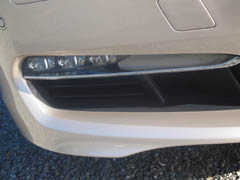 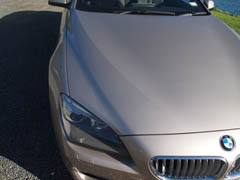
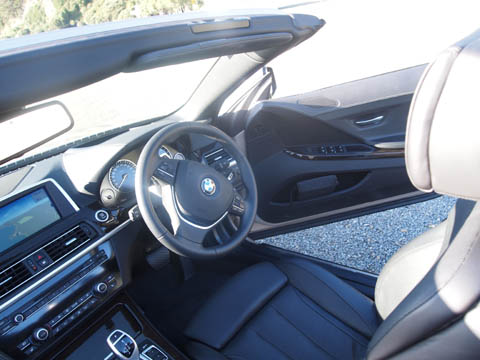
|
 |
This is the car that elicits comments from schoolboys
about it being ‘cool’, and even the police officer
who encountered us during the initial Auckland test gave it the
thumbs-up. We found a note on the windscreen wipers with ‘Nice
car’
| Related articles |
 |
Five’s flip
sides
Jack Yan tests both the BMW
550i and 535d and discovers two very different beasts—but
can both be the best executive saloon in the world?
photographed by Tanya Sooksombatisatian
|
 |
The X factor
BMW’s X1 SUV
has more sporting proportions and a more sensible size for the
sensitive early 2010s. However, it’s not the complete package,
as Jack Yan explains
photographed by the author |
 |
The spirit
of 2002
No, not the year: Jack Yan tries to find if any of
BMW’s diesel coupés
recapture the essence of the company’s famed 2002 range
of the 1970s
photographed by the author and Nigel Dunn
|
|

